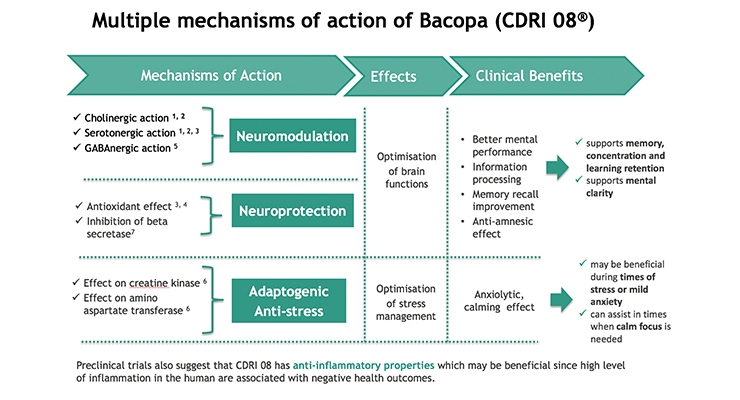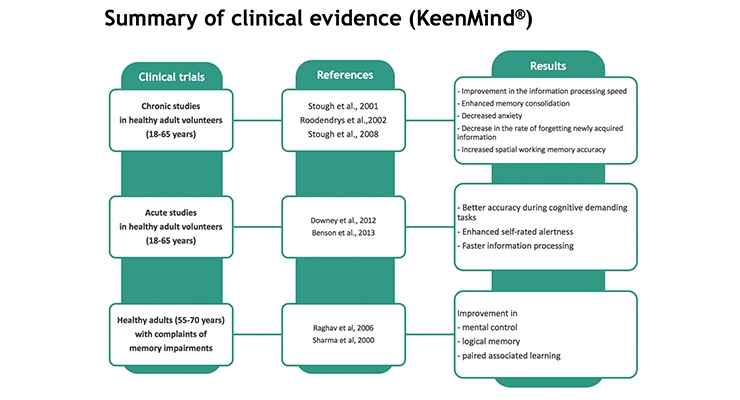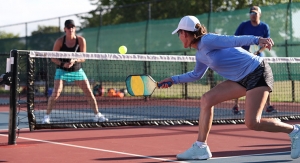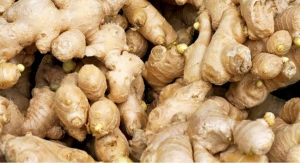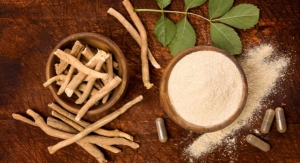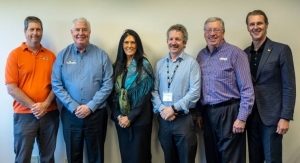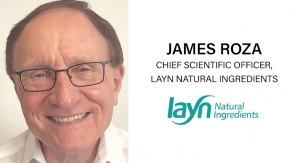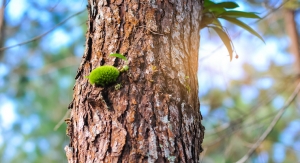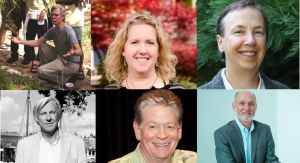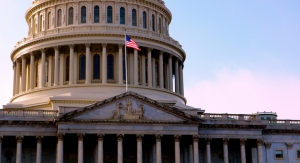Dilip Ghosh, PhD, FACN, nutriConnect12.05.16
Herbal medicines have been used in many cultures over thousands of years to boost memory function and manage behavioral and psychological symptoms. Specific herbs which have attracted the most attention include Ginkgo biloba, Bacopa monniera, Huperzia serrata, Panax ginseng, Curcuma longa and Melissa officinalis. Tea, especially green tea (Camellia sinensis) is also considered beneficial for cognitive function owing to its antioxidant effects.
The current conventional treatment of early to mid-dementia offers only modest symptomatic relief, which is not satisfactory considering the magnitude of the disease burden on patients and communities as a whole. Several classes of pharmaceutical agents are currently used for the management of Alzheimer’s disease (AD) in particular, including cholinesterase inhibitors and glutamate receptor antagonists, which are suggested to produce the best clinical outcomes (Farlow et al., 2008).
Complementary and alternative medicine (CAM) has an extensive history of use worldwide and several interventions have been explored as therapeutic options for the management or prevention of AD. According to a recent U.S. national survey conducted by the National Center for Complementary and Alternative Medicine, approximately 38% of U.S. adults and approximately 12% of children use some form of CAM (Barnes et al., 2008). The World Health Organization (WHO) estimated that almost 75% of the world’s population has therapeutic experience with herbal remedies (Dubey et al., 2004).
The use of CAM for treatment of age-related disorders dates to 5,000 years ago in ancient China where herbal remedies were used to boost memory function and increase longevity. The common forms of CAM currently used in the management of AD include herbal medicine (including Western herbal medicine, Chinese herbal medicine, Ayurvedic medicine), vitamins and dietary supplements (e.g., fish oil), acupuncture, aromatherapy, mind-body therapy (e.g., meditation, qigong exercise), physical therapies (e.g., chiropractic, reflexology, remedial massage, therapeutic touch), music therapy and melatonin and light therapy.
Dementia in the elderly is an epidemic of unprecedented proportion and crisis in modern medicine. Licensed drugs for dementia are still few: cholinesterase inhibitors (four drugs developed to inhibit acetylcholinesterase (AChE)), butyrylcholinesterase (BuChE) and memantine (a glutamate NMDA receptor antagonist). A range of other drugs often prescribed incidentally include antipsychotics, antidepressants, tranquillizers and hypnotics. Symptoms include a range of cognitive impairments (notably memory—particularly the ability to form new memories, attention and executive function).
Bacopa: An Herb to Watch
Bacopa monniera (Brahmi) is a medicinal plant that occurs naturally in India and has been mentioned in several ancient Ayurvedic treatises including the Charaka Samhita (sixth century AD) and the Bravprakash Var-Prakarana (sixteenth century AD) for the management of a range of mental conditions including anxiety, poor cognition and lack of concentration. Brahmi is marketed in Western countries as a memory-enhancing agent. The major constituents of Brahmi are two saponins: bacosides A and B.
The exact mechanisms for these actions pharmacological/nootropic actions of Brahmi are induced by antioxidant effects via metal chelation at the initiation level and also as a lipid peroxidation chain action breaker, and modulation of cholinergic system via reversing acetyl choline (ACh) depletion, reducing choline acetylase activity and decreasing muscarinic receptor binding (see Table 1).
Data from human studies are consistent with results from animal studies. Several double-blind, placebo-controlled studies (both chronic and acute) demonstrated significant improvement in early information processing, verbal learning, memory consolidation and decreased the rate of forgetting newly acquired information with KeenMind treatment (see Table 2).
Several previous human trials concluded that Bacopa extract used in KeenMind is a relatively safe and effective option for the treatment of age-related memory impairment. Further studies are required to ascertain the longer term effects of administration; potential therapeutic effects of Brahmi for AD will also need to be validated in AD patients. NW
References
Barnes PM, et al. 2008. Complementary and alternative medicine use among adults and children: United States, 2007. CDC National Health Statistics Report no. 12.
Chang, D, et al. 2011. Complementary therapies for Alzheimer’s disease. Encyclopaedic book, “Dementia” (4th edition, eds. Ames, O’Brien and Burns), Hodder,U.K. Chapter 57, 504-512.
Dubey NK, et al. 2004. Global promotion of herbal medicine: India’s opportunity. Current Science. 86: 37–41.
Farlow MR, et al. 2008. Treatment options in Alzheimer’s disease: Maximizing benefit, managing expectations. Dementia and Geriatic Cognitive Disorders. 25:
408–22.
Dilip Ghosh, PhD, FACN
nutriConnect
Dilip Ghosh, PhD, FACN, is director of nutriConnect, based in Sydney, Australia. He is also professionally involved with Soho Flordis International, the University of Western Sydney, Australia, and is an Honorary Ambassador with the Global Harmonization Initiative (GHI). Dr. Ghosh received his PhD in biomedical science from University of Calcutta, India. He has been involved in drug-development (both synthetic and natural) and functional food research and development both in academic and industry domains. Dr. Ghosh has published more than 70 papers in peer-reviewed journals, and he has authored three recent books: “Biotechnology in Functional Foods and Nutraceuticals,” “Innovation in Healthy and Functional Foods,” and “Clinical Perspective of Functional Foods and Nutraceuticals” under CRC Press. His next book, “Pharmaceuticals to Nutraceuticals: A Shift in Disease Prevention,” is in press. He can be reached at dilipghosh@nutriconnect.com.au; www.nutriconnect.com.au.
The current conventional treatment of early to mid-dementia offers only modest symptomatic relief, which is not satisfactory considering the magnitude of the disease burden on patients and communities as a whole. Several classes of pharmaceutical agents are currently used for the management of Alzheimer’s disease (AD) in particular, including cholinesterase inhibitors and glutamate receptor antagonists, which are suggested to produce the best clinical outcomes (Farlow et al., 2008).
Complementary and alternative medicine (CAM) has an extensive history of use worldwide and several interventions have been explored as therapeutic options for the management or prevention of AD. According to a recent U.S. national survey conducted by the National Center for Complementary and Alternative Medicine, approximately 38% of U.S. adults and approximately 12% of children use some form of CAM (Barnes et al., 2008). The World Health Organization (WHO) estimated that almost 75% of the world’s population has therapeutic experience with herbal remedies (Dubey et al., 2004).
The use of CAM for treatment of age-related disorders dates to 5,000 years ago in ancient China where herbal remedies were used to boost memory function and increase longevity. The common forms of CAM currently used in the management of AD include herbal medicine (including Western herbal medicine, Chinese herbal medicine, Ayurvedic medicine), vitamins and dietary supplements (e.g., fish oil), acupuncture, aromatherapy, mind-body therapy (e.g., meditation, qigong exercise), physical therapies (e.g., chiropractic, reflexology, remedial massage, therapeutic touch), music therapy and melatonin and light therapy.
Dementia in the elderly is an epidemic of unprecedented proportion and crisis in modern medicine. Licensed drugs for dementia are still few: cholinesterase inhibitors (four drugs developed to inhibit acetylcholinesterase (AChE)), butyrylcholinesterase (BuChE) and memantine (a glutamate NMDA receptor antagonist). A range of other drugs often prescribed incidentally include antipsychotics, antidepressants, tranquillizers and hypnotics. Symptoms include a range of cognitive impairments (notably memory—particularly the ability to form new memories, attention and executive function).
Bacopa: An Herb to Watch
Bacopa monniera (Brahmi) is a medicinal plant that occurs naturally in India and has been mentioned in several ancient Ayurvedic treatises including the Charaka Samhita (sixth century AD) and the Bravprakash Var-Prakarana (sixteenth century AD) for the management of a range of mental conditions including anxiety, poor cognition and lack of concentration. Brahmi is marketed in Western countries as a memory-enhancing agent. The major constituents of Brahmi are two saponins: bacosides A and B.
The exact mechanisms for these actions pharmacological/nootropic actions of Brahmi are induced by antioxidant effects via metal chelation at the initiation level and also as a lipid peroxidation chain action breaker, and modulation of cholinergic system via reversing acetyl choline (ACh) depletion, reducing choline acetylase activity and decreasing muscarinic receptor binding (see Table 1).
Data from human studies are consistent with results from animal studies. Several double-blind, placebo-controlled studies (both chronic and acute) demonstrated significant improvement in early information processing, verbal learning, memory consolidation and decreased the rate of forgetting newly acquired information with KeenMind treatment (see Table 2).
Several previous human trials concluded that Bacopa extract used in KeenMind is a relatively safe and effective option for the treatment of age-related memory impairment. Further studies are required to ascertain the longer term effects of administration; potential therapeutic effects of Brahmi for AD will also need to be validated in AD patients. NW
References
Barnes PM, et al. 2008. Complementary and alternative medicine use among adults and children: United States, 2007. CDC National Health Statistics Report no. 12.
Chang, D, et al. 2011. Complementary therapies for Alzheimer’s disease. Encyclopaedic book, “Dementia” (4th edition, eds. Ames, O’Brien and Burns), Hodder,U.K. Chapter 57, 504-512.
Dubey NK, et al. 2004. Global promotion of herbal medicine: India’s opportunity. Current Science. 86: 37–41.
Farlow MR, et al. 2008. Treatment options in Alzheimer’s disease: Maximizing benefit, managing expectations. Dementia and Geriatic Cognitive Disorders. 25:
408–22.
Dilip Ghosh, PhD, FACN
nutriConnect
Dilip Ghosh, PhD, FACN, is director of nutriConnect, based in Sydney, Australia. He is also professionally involved with Soho Flordis International, the University of Western Sydney, Australia, and is an Honorary Ambassador with the Global Harmonization Initiative (GHI). Dr. Ghosh received his PhD in biomedical science from University of Calcutta, India. He has been involved in drug-development (both synthetic and natural) and functional food research and development both in academic and industry domains. Dr. Ghosh has published more than 70 papers in peer-reviewed journals, and he has authored three recent books: “Biotechnology in Functional Foods and Nutraceuticals,” “Innovation in Healthy and Functional Foods,” and “Clinical Perspective of Functional Foods and Nutraceuticals” under CRC Press. His next book, “Pharmaceuticals to Nutraceuticals: A Shift in Disease Prevention,” is in press. He can be reached at dilipghosh@nutriconnect.com.au; www.nutriconnect.com.au.


